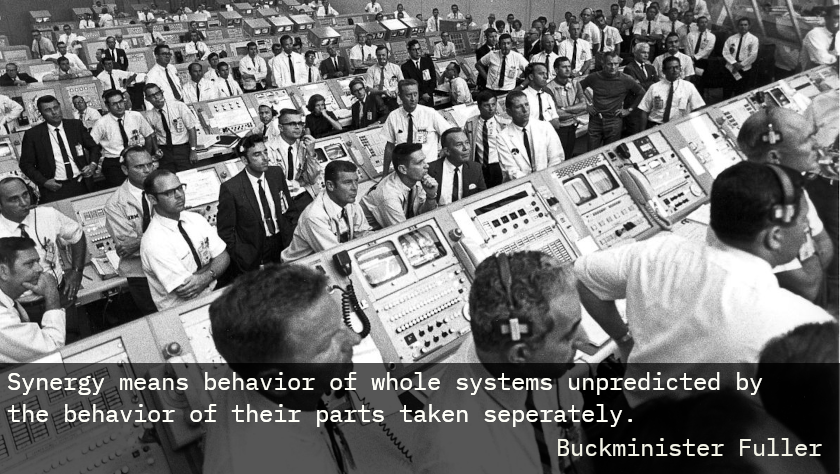
COVID revealed a truth: the US is brittle. There was a need for fast, rapid action. We have a SOP for pandemics: you close the borders. The nature by which viruses spread is not magic. Instead: the media sternly fingerwags that labeling the virus by where it came from is racist, followed by social measures held in place by shaming. There is a sputtering of action at the beginning, followed by nothing but yelling about masks for 9 months.
Weaknesses do not go unnoticed. {It} happens. I can’t name what form {it} takes but {it} happens and {it} tests our institutions hard. We papered over COVID, but there’s only so much quantitative easing can do. {It} knows where to strike next time.
At the beginning of this pandemic but while toilet paper was in stock I put together what I thought was enough to get me through two months. Soon I realized I had bought 6 months worth of granola and two weeks worth of everything else. The lesson was clear: I was brittle. I relied on everything else in the world functioning properly, but there is absolutely no guarantee that that will happen.
{It} hasn’t happened yet. There’s still time to create resilient institutions. If I build them in time then when {it} hits–my guys win.
☉
Don’t get me wrong here: I’m not excited for the coming calamity. If I could have my way our institutions and its people would be healthy, robust and effective. When {it} comes {it} will be horrible, but sturdy binds and sustainable systems will survive. Only cowards and the innocent should fear our future. We the capable must protect the latter and leave the former in the rushing winds.
It is possible for Americans to be healthy. It is possible for Americans to flourish. To do so we must understand the way in which we are embedded into the world.
When I look around my environment, what I see are humans. Humans crafted this chair I’m sitting in. Many, many humans got involved in crafting my computer. When I go online all I hear is humans telling me what they think. Some even go so far as to blog about it. The point is this: It’s easy to be fooled and think that the relationships between humans are the only thing that matter. They’re almost all that we see.
Let’s take a look at the ground.
☉
Inside the soil is a full ecosystem, the soil food web. We can’t see it, but plants grow due to the combined efforts of bacteria, fungi, protozoa, worms, beetles, birds and animals:

Each of these organisms has a unique role to play. Different bacteria perform a variety of functions, from decomposing plant matter to fixing atmospheric nitrogen. As worms move through the soil they aerate it and move nutrients around. On this root we can see fungi that help the plant obtain water and nutrients:

No fertilizer nor pesticide nor fungicide was needed for old-growth forests. Different organisms in the soil co-operate (and compete) to maintain the overall health of the system.
Yet, what do we see when we turn to industrial farming? The soil is tilled, destroying these organisms and the structure they’ve built. We cake on the fertilizer to account for the lack of nitrogen fixing, then resort to fungicide when only pestilent species can survive in the harsh environment we’ve created.
This matters! “We are what we eat” is both a pithy saying and unassailable truth: in order for our bodies to persist and maintain themselves, we take in outside nutrients and turn those into properly functioning cells. This is just one of the many ways in which we are truly embedded into system of processes that are much, much larger than just our human systems. When we do not respect this truth we risk destroying ourselves through neglect of our surroundings.
☉
But I say unto you: that our institutions will not change to the form we desire does not necessitate working strenuously to blow them all down. No! We will form our desired institutions in the open spaces between the rotting ones.